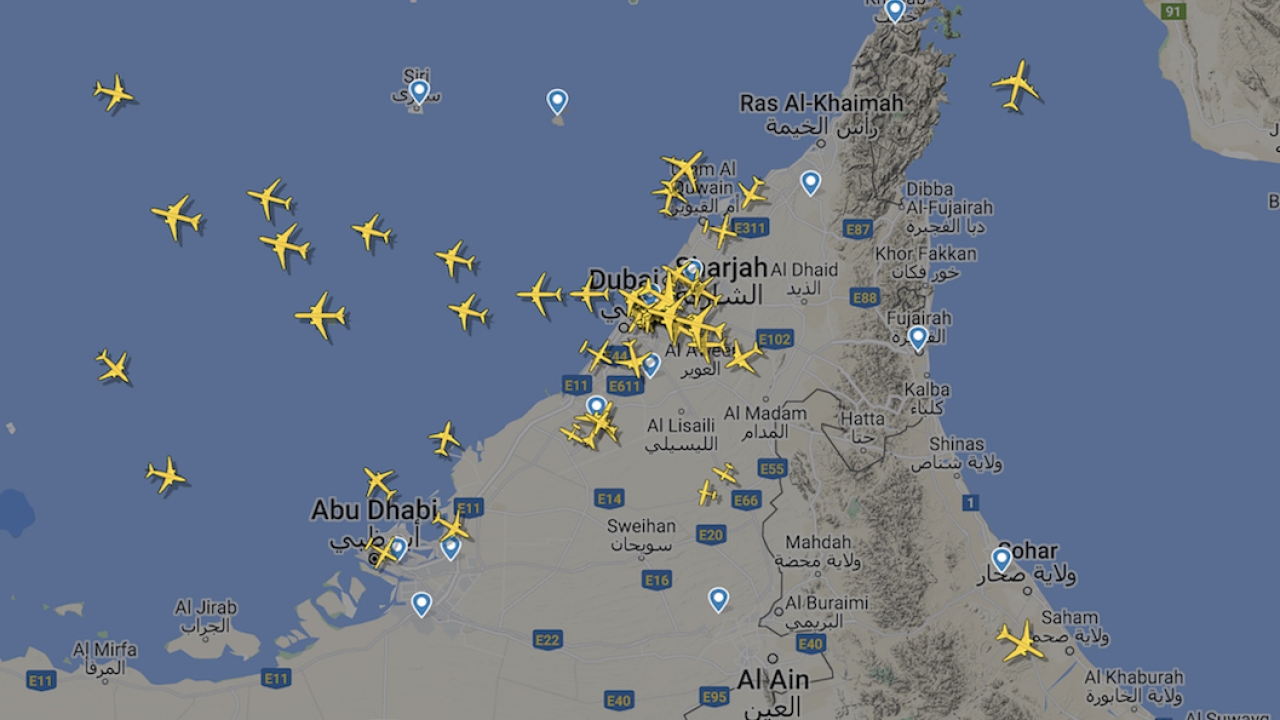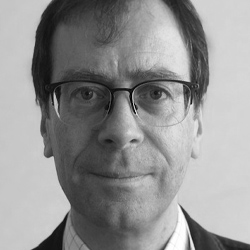Direct flights can help ease congestion
The UAE is aiming to increase air traffic efficiency by introducing a ‘free airspace’ scheme.

With increased air traffic planned, the UAE aims to increase efficiency with its 'free airspace' scheme. Image: Flight Radar 24
The UAE’s aviation regulator, the General Civil Aviation Authority (GCAA), has launched the UAE Free Airspace Project (FAP).
The GCAA describes the FAP as a “transformative initiative” that aims to keep the UAE in the vanguard of the Middle East’s aviation sector, improving air transport efficiency as well as cutting emissions of greenhouse gases.
This is in keeping with the UAE’s designation of 2023 as the Year of Sustainability.
The FAP seeks to improve the efficiency of air navigation by allowing aircraft to fly the most direct routes between two points. This can reduce congestion around airports, an important consideration at busy locations such as Dubai and Abu Dhabi.
Easing congestion is an increasingly important consideration, as UAE air traffic in 2022 is expected to exceed pre-pandemic levels.
As its name suggests, FAP aims to provide aircraft with freedom of movement, without the constraints of traditional air routes.
Free Route Airspace (FRA) has been available to aircraft using the Emirates Flight Information Region at Flight Level355 (35,500ft/10,820m) and above since July, giving aircraft freedom to plan flights freely between known and published entry and exit points.
The GCAA anticipates that the project could benefit as many as 150 flights a day, leading to savings of more than 30 million kg of aviation fuel over the course of a year.
Ahmed Ibrahim Al Jallaf, assistant general-director of Dubai’s Air Navigation Services, noted that average air traffic flows exceeded 2,500 flights per day in June 2023 and that the UAE is one of the first countries where air traffic has been restored to pre-pandemic levels.
He expects this growth in air traffic to account for nearly 900,000 flights by the end of the year, an increase of more than 10% above 2019 levels.
FAP project manager, Saqr Obeid Al Merashdah said that the measure in the UAE FIR was the first step in a plan to apply free airspace more widely: “The maximum benefit of this concept will be achieved when this transformative project is applied on a larger scale by connecting with the Gulf and regional navigation network.”
The GCAA said that numerous simulation sessions were conducted to assess and evaluate the FRA concept, with the objective of reducing ATC workload.
Feedback from the simulation sessions has improved the FRA’s design: “General consensus that the final concept of FRA is enhancing the efficiency of air traffic flow in the Emirates FIR,” the GCAA said.
Several familiarisation workshops are planned for airspace users to give them familiarity with the concept developed by the UAE and to ensure the smooth operation of the FRA.
Why aircraft don't always take the shortest route
Aircraft traversing the globe do not always take the shortest route available to them.
In many cases – notably in Europe, where there is a jigsaw of national air traffic control boundaries – aircraft have to follow prescribed paths in the sky to get to their destinations. These are often not the shortest routes between two points.
Allowing airlines to take more direct routes could have a significant effect in reducing fuel consumption, and the resulting emissions, from airline traffic.
Indeed, in Europe, the Single European Sky (SES) project has for more than 20 years tried to achieve this. It is calculated that those savings could give a 10%-15% reduction in CO₂ emission. This is a saving that would really ‘move the needle’, experts say in reducing the airline industry’s environmental impact.
In Europe, however, the pace of progress of SES has been glacially slow.
This has been due to several factors, including states fearing a loss of sovereignty over their airspace, air traffic controllers’ trade unions fearing that greater efficiency would result in job cuts among their members and the issue failing to gather sufficient importance in national governments’ policy priority lists.
Stay up to date
Subscribe to the free Times Aerospace newsletter and receive the latest content every week. We'll never share your email address.


